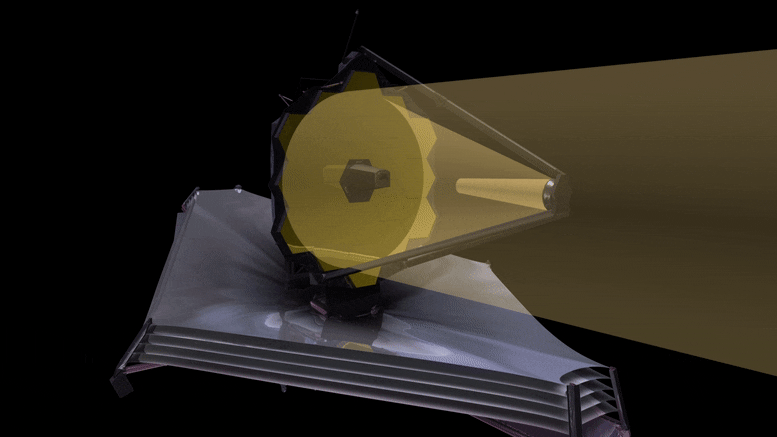
This animation shows the path light will follow as it hits the primary James Webb Space Telescope (JWST) mirror, and is reflected to the secondary, and then in through the aft optics assembly where the tertiary and fine steering mirrors are. The light is then reflected and split and directed to the science instruments by pick-off mirrors. JWST is a three-mirror anastigmat telescope. Credit: NASA, ESA, and G. Bacon (STScI)
This week, the three-month process of aligning the telescope began – and over the last day, Webb team members saw the first photons of starlight that traveled through the entire telescope and were detected by the Near Infrared Camera (NIRCam) instrument. This milestone marks the first of many steps to capture images that are at first unfocused and use them to slowly fine-tune the telescope. This is the very beginning of the process, but so far the initial results match expectations and simulations.
A team of engineers and scientists from Ball Aerospace, Space Telescope Science Institute, and NASA’s Goddard Space Flight Center will now use data taken with NIRCam to progressively align the telescope. The team developed and demonstrated the algorithms using a 1/6th scale model telescope testbed. They have simulated and rehearsed the process many times and are now ready to do this with Webb. The process will take place in seven phases over the next three months, culminating in a fully aligned telescope ready for instrument commissioning. The images taken by Webb during this period will not be “pretty” images like the new views of the universe Webb will unveil later this summer. They strictly serve the purpose of preparing the telescope for science.
To work together as a single mirror, the telescope’s 18 primary mirror segments need to match each other to a fraction of a wavelength of light – approximately 50 nanometers. To put this in perspective, if the Webb primary mirror were the size of the United States, each segment would be the size of Texas, and the team would need to line the height of those Texas-sized segments up with each other to an accuracy of about 1.5 inches (3.8 centimeters).
Scott Acton and Chanda Walker of Ball Aerospace, along with Lee Feinberg of NASA Goddard, walk through the basic steps below:
“With deployment of the mirror segments now complete, and the instruments turned on, the team has begun the numerous steps required to prepare and calibrate the telescope to do its job. The telescope commissioning process will take much longer than previous space telescopes because Webb’s primary mirror consists of 18 individual mirror segments that need to work together as a single high-precision optical surface. The steps in the commissioning process include:
- Segment Image Identification
- Segment Alignment
- Image Stacking
- Coarse Phasing
- Fine Phasing
- Telescope Alignment Over Instrument Fields of View
- Iterate Alignment for Final Correction
1. Segment Image Identification
First, we need to align the telescope relative to the spacecraft. The spacecraft is capable of making extremely precise pointing moves, using “star trackers.” Think of star trackers as a GPS for spacecraft. At first, the position of the spacecraft from the star trackers does not match the position of each of the mirror segments.
We are pointing the telescope at a bright, isolated star (HD 84406) to capture a series of images that are then stitched together to form a picture of that part of the sky. But remember, we don’t have just one mirror looking at this star; we have 18 mirrors, each of which is initially tilted towards a different part of the sky. As a result, we’ll actually capture 18 slightly shifted copies of the star – each one out of focus and uniquely distorted. We refer to these initial star-copies as “segment images.” In fact, depending on the starting positions of the mirrors, it may take multiple iterations to locate all 18 segments in one image.
One by one, we will move the 18 mirror segments to determine which segment creates which segment image. After matching the mirror segments to their respective images, we can tilt the mirrors to bring all the images near a common point for further analysis. We call this arrangement an “image array.”
2. Segment Alignment
After we have the image array, we can perform Segment Alignment, which corrects most of the large positioning errors of the mirror segments.
We begin by defocusing the segment images by moving the secondary mirror slightly. Mathematical analysis, called Phase Retrieval, is applied to the defocused images to determine the precise positioning errors of the segments. Adjustments of the segments then result in 18 well-corrected “telescopes.” However, the segments still don’t work together as a single mirror.
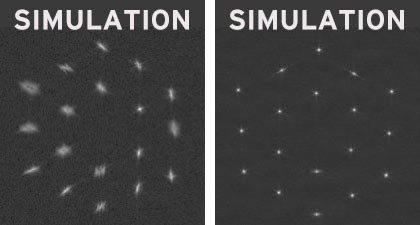
(Left) Before: Simulated initial array of images. (Right) After: Simulated array of 18 corrected segments. Credit: NASA
3. Image Stacking
To put all of the light in a single place, each segment image must be stacked on top of one another. In the Image Stacking step, we move the individual segment images so that they fall precisely at the center of the field to produce one unified image. This process prepares the telescope for Coarse Phasing.
The stacking is performed sequentially in three groups (A-segments, B-segments, and C-segments).

Simulation of image stacking. First panel: Initial image mosaic. Second panel: A-segments stacked. Third panel: A- and B-segments stacked. Fourth panel: A-, B-, and C-segments stacked. Credit: NASA
4. Coarse Phasing
Although Image Stacking puts all the light in one place on the detector, the segments are still acting as 18 small telescopes rather than one big one. The segments need to be lined up with each other with an accuracy smaller than the wavelength of the light.
Conducted three times during the commissioning process, Coarse Phasing measures and corrects the vertical displacement (piston difference) of the mirror segments. Using a technology known as Dispersed Fringe Sensing, we use NIRCam to capture light spectra from 20 separate pairings of mirror segments. The spectrum will resemble a barber pole pattern with a slope (or angle) determined by the piston difference of the two segments in the pairing.
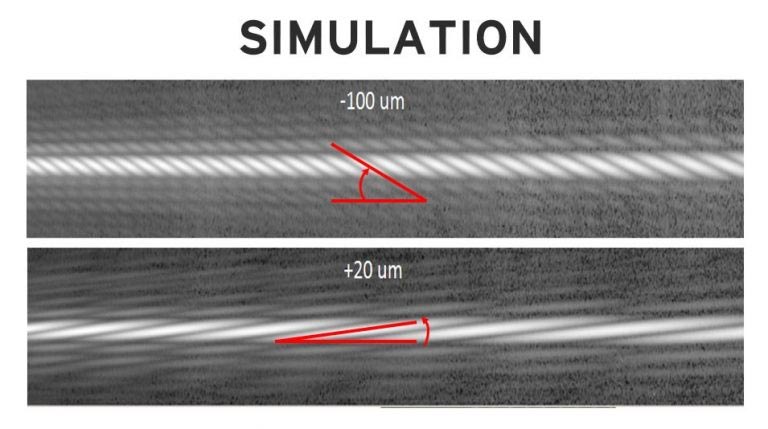
In this simulation, the “Barber pole” patterns are created by the Disperse Fringe Sensor indicating a large piston error (top) or a small piston error (bottom). Credit: NASA
5. Fine Phasing
Fine Phasing is also conducted three times, directly after each round of Coarse Phasing, and then routinely throughout Webb’s lifespan. These operations measure and correct the remaining alignment errors using the same defocusing method applied during Segment Alignment. However, instead of using the secondary mirror, we use special optical elements inside the science instrument which introduce varying amounts of defocus for each image (-8, -4, +4, and +8 waves of defocus).
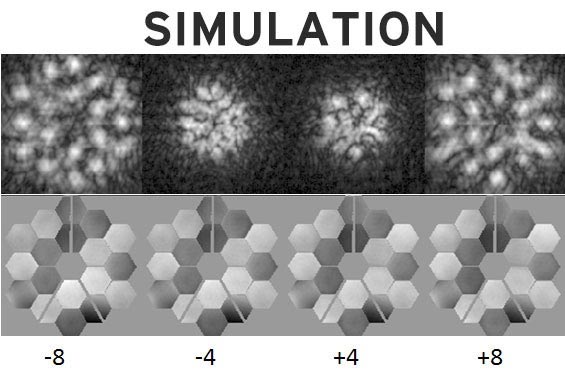
A simulation of the defocused images used in Fine Phasing. The images (top) show defocus introduced to an almost aligned telescope. The analysis (bottom) indicates the errors associated with each telescope segment. Segments with very bright or dark colors need larger corrections. Credit: NASA
6. Telescope Alignment Over Instrument Fields of View
After Fine Phasing, the telescope will be well aligned at one place in the NIRCam field of view. Now we need to extend the alignment to the rest of the instruments.
In this phase of the commissioning process, we make measurements at multiple locations, or field points, across each of the science instruments, as shown below. More variation in intensity indicates larger errors at that field point. An algorithm calculates the final corrections needed to achieve a well-aligned telescope across all science instruments.
7. Iterate Alignment for Final Correction
After applying the Field of View correction, the key thing left to address is the removal of any small, residual positioning errors in the primary mirror segments. We measure and make corrections using the Fine Phasing process. We will do a final check of the image quality across each of the science instruments; once this is verified, the wavefront sensing and controls process will be complete.
As we go through the seven steps, we may find that we need to iterate earlier steps as well. The process is flexible and modular to allow for iteration. After roughly three months of aligning the telescope, we will be ready to proceed to commissioning the instruments.”
Written by Scott Acton, Webb lead wavefront sensing and control scientist, Ball Aerospace; Chanda Walker, Webb wavefront sensing and control scientist, Ball Aerospace; and Lee Feinberg, Webb optical telescope element manager, NASA’s Goddard Space Flight Center.

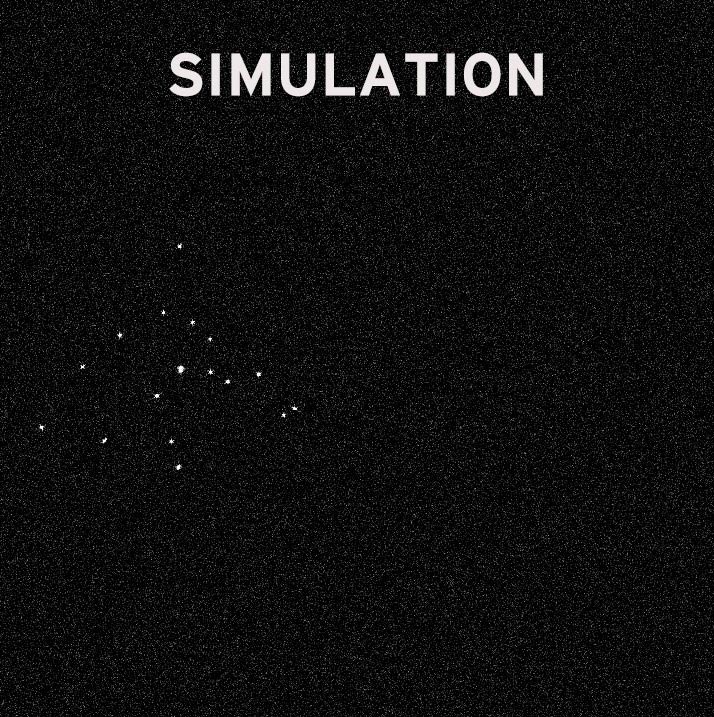
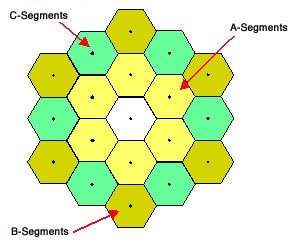
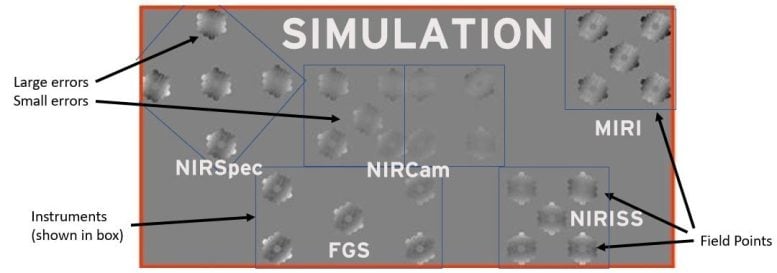


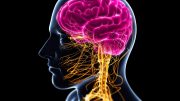
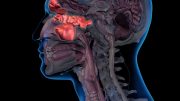
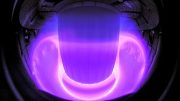
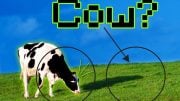
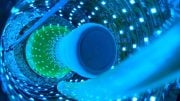
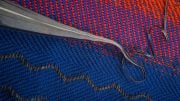
Babu G. Ranganathan*
(B.A. Bible/Biology)
JUST BECAUSE SCIENCE CAN EXPLAIN how an airplane works doesn’t mean that no one designed or made the airplane. And just because science can explain how life or the universe works doesn’t mean there was no Designer and Maker behind them.
Natural laws may explain how the order in the universe works and operates, but mere undirected natural laws cannot explain the origin of that order. Once you have a complete and living cell then the genetic code and biological machinery exist to direct the formation of more cells from raw materials such as amino acids and other chemicals, but how could life or the cell have naturally originated when no directing code and mechanisms existed in nature? Read my Internet article: HOW FORENSIC SCIENCE REFUTES ATHEISM.
WHAT IS SCIENCE? Science simply is knowledge based on observation. No human observed the universe coming by chance or by design, by creation or by evolution. These are positions of faith. The issue is which faith the scientific evidence best supports.
SCIENCE SHOWS THAT THE UNIVERSE CANNOT BE ETERNAL because it could not have sustained itself eternally due to the law of entropy (increasing and irreversible net energy decay, even in an open system). Even a hypothetical oscillating universe could not continue to oscillate eternally! Einstein’s General Theory of Relativity shows that space, matter, and time all are physical and all had a beginning. Space even produces particles because it’s actually something, not nothing. What about the Higgs boson (the so-called “God Particle”)? The Higgs boson, even if it existed, would not have created mass from nothing, but rather it would have converted energy into mass. Einstein showed that all matter is some form of energy. Even time had a beginning! Time is not eternal.
The law of entropy doesn’t allow the universe to be eternal. If the universe were eternal, everything, including time and space (which modern science has shown are as physical as mass or matter), would have become totally entropied by now and the entire universe would have ended in a uniform heat death a long, long time ago. The fact that this hasn’t happened already is powerful evidence for a beginning to the universe.
Popular atheistic scientist Stephen Hawking admits that the universe had a beginning and came from nothing but he believes that nothing became something by a natural process yet to be discovered. That’s not rational thinking at all, and it also would be making the effect greater than its cause to say that nothing created something. The beginning had to be of supernatural origin because science teaches us from the First Law of Thermodynamics that natural laws and processes do not have the ability to bring something into existence from nothing.
The supernatural origin of the universe cannot be proved by science but science points to a supernatural intelligence and power for the origin and order of the universe. Where did God come from? Obviously, unlike the universe, God’s nature doesn’t require a beginning.
The disorder in the universe can be explained because of chance and random processes, but the order can be explained only because of intelligence and design.
Gravity may explain how the order found in the precise and orderly courses of thousands of billions of stars is maintained, but gravity cannot explain the origin of that order.
Some evolutionary astronomers believe that trillions of stars crashed into each other leaving surviving stars to find precise orderly orbits in space. Not only is this irrational, but if there was such a mass collision of stars then there would be a super mass residue of gas clouds in space to support this hypothesis. The present level of residue of gas clouds in space doesn’t support the magnitude of star deaths required for such a hypothesis. And, as already stated, the origin of stars cannot be explained by the Big Bang because of the reasons mentioned above. It’s one thing to say that stars may decay and die into random gas clouds, but it is totally different to say that gas clouds form into stars.
Even the father of Chaos theory admitted that the “mechanisms” existing in the non-living world allow for only very rudimentary levels of order to arise spontaneously (by chance), but not the kind or level of order we find in the structures of DNA, RNA, and proteins. Yes, individual amino acids have been shown to come into existence by chance but not protein molecules which require that the various amino acids be in a precise sequence just like the letters found in a sentence.
Some things don’t need experiment or scientific proof. In law there is a dictum called prima facie evidence. It means “evidence that speaks for itself.”
An example of a true prima facie would be if you discovered an elaborate sand castle on the beach. You don’t have to experiment to know that it came by design and not by the chance forces of wind and water.
If you discovered a romantic letter or message written in the sand, you don’t have to experiment to know that it was by design and not because a stick randomly carried by wind put it there. You naturally assume that an intelligent and rational being was responsible.
It’s interesting that Carl Sagan would have acknowledged sequential radio signals in space as evidence of intelligent life sending them, but he wouldn’t acknowledge the sequential structure of molecules in DNA (the genetic code) as evidence of an intelligent Cause. Read my popular Internet article, HOW DID MY DNA MAKE ME.
I encourage all to read my popular Internet articles:
NATURAL LIMITS TO EVOLUTION
HOW FORENSIC SCIENCE REFUTES ATHEISM
Visit my latest Internet site: THE SCIENCE SUPPORTING CREATION (This site answers many arguments, both old and new, that have been used by evolutionists to support their theory)
Author of popular Internet article, TRADITIONAL DOCTRINE OF HELL EVOLVED FROM GREEK ROOTS
*I have given successful lectures (with question and answer period afterwards) defending creation before evolutionist science faculty and students at various colleges and universities. I’ve been privileged to be recognized in the 24th edition of Marquis “Who’s Who in The East” for my writings on religion and science.
With all due respect, Babu, f*ck off with your spammy bulls***.
Notice how this silly creationist cannot even define what the thing is that he worships.